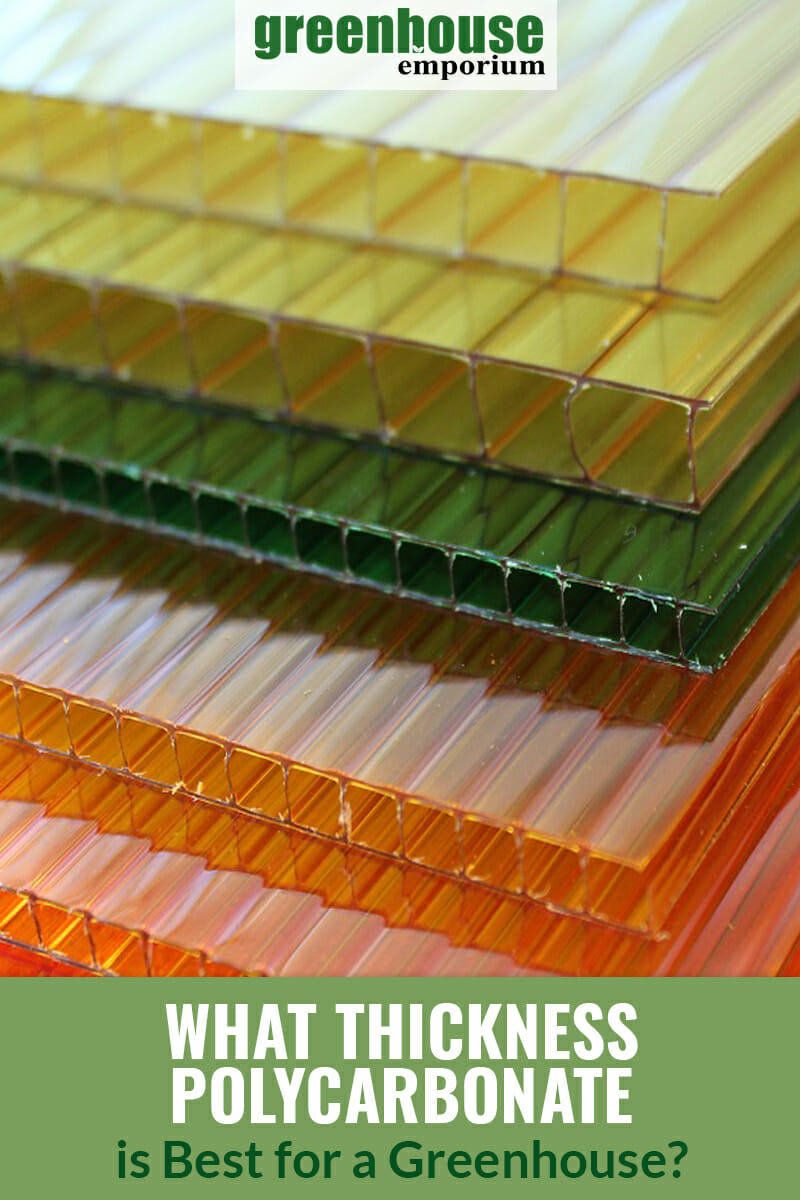
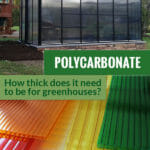
Polycarbonate is the most popular choice for greenhouses nowadays. It has many advantages from light-diffusing properties to durability. The question is, though, how much influence does the thickness of the Polycarbonate have.
Choosing the right panel or the right greenhouse kit that features the thickness you want can get difficult. There is a wide variety of panels and kits to choose from and it all depends on your greenhouse structure, climate, and budget.
Polycarbonate is a strong, durable, and flexible thermoplastic. This material is malleable and can be prepared to fit any purpose. These features make Polycarbonate a better option than other alternative coverings.
Skilled installation of panels with a precisely chosen material, including size, thickness, color, and the manufacturer, will act as an assurance for the long and fruitful performance of your greenhouse.
Some misconceptions about Polycarbonate on greenhouses
Before we start with the insulation factors and other things, we want to clear up a few things. There are a few misconceptions that we keep hearing from our customers.
Polycarbonate is transparent like glass
This is absolutely wrong. There are no high-quality Polycarbonate panels that you can see through like glass. That transparent material is acrylic. Polycarbonate panels are translucent (as in: let sunlight through) and it’s not completely opaque.
Depending on the brand and product, Polycarbonate can be less or more see-through. Some manufacturers even create panels specifically for more privacy or for more light diffusion.
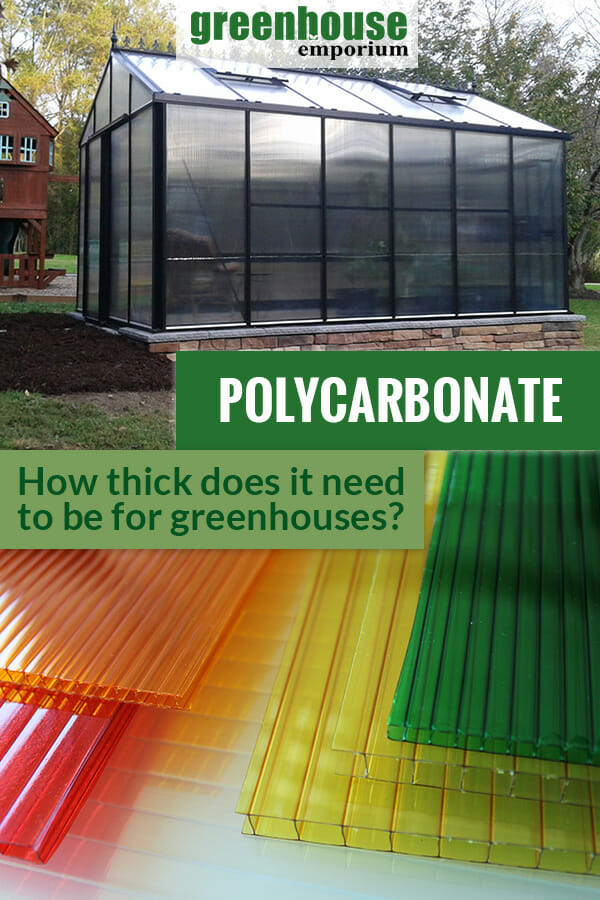
Thicker Polycarbonate provides more insulation than thinner ones
This is actually the most common misconception about greenhouse insulation. Insulation is NOT ONLY coming from the panel thickness. It also has a lot to do with the greenhouse structure and the quality of the panel itself.
The tighter the greenhouse is constructed (maybe even with rubber seals between framing and panels), the better it is insulated. So, it’ll be cooler in summer and warmer in winter.
On another note, Solexx panels are thinner than most greenhouses but they still provide a better insulation factor than 8 mm twin walls.
Winter insulation is the most important part
Another thing people don’t think about is the heat. People are concerned about the winter but the spring and summer should concern you just as much. While you can heat a greenhouse easily, it’s harder to cool it down because greenhouses are always hotter.
Generally speaking, the thicker the panel, the more heat it traps. A warmer greenhouse doesn’t mean a fruitful harvest when it’s summer.
So, in order to truly grow year-round inside your greenhouse, you have to find ways to cool it down in summer.
Polycarbonate will discolor over time
The dreaded yellowing of Polycarbonate panels is a common worry because a lot of people have seen it themselves. However, with technological advance, this should be a thing of the past. If a panel yellows after a few years, it is a sign of defect or low quality.
While keeping this in mind, you came here to learn more about the insulation factors of the different Polycarbonate materials and their light transmission.
Characteristics of Polycarbonate panels for greenhouses
When looking at PC panels for greenhouses, you’ll notice the rectangular combs. It’s like empty spaces/tubes that run from top to bottom. It’s essentially two sheets (walls) with stabilizing walls in between. It’s like a double-pane window just with the framing in between the panes. These panels can also be designed as triple walls.
This design increases the insulation factor, stability, and effectiveness while keeping it somewhat flexible. The “air pockets” help with heat retention.
The multi-wall sheet has relatively less light transmission rate and has a less solar reflection. It is lightweight and easy to install.
It offers superb insulation to prevent the unfavorable results of the extremely intense weather. This is also an excellent crash absorber that can even endure quite a bit of hail.
Another style for Polycarbonate panels is the honeycomb design. They are less common and more expensive, but sturdier.
So, how thick should your Polycarbonate panels be?
All of this is a highly individual question and depends on your own needs.
As a rule of thumb, 8 mm and higher will do fine for any type of weather. If you don’t get many icy-cold nights or if you plan on heating your greenhouse throughout the cold season, you might be good with thinner panels.
4 mm thick panels are primarily used as a “season extender” not necessarily for year round growing.
Then again, you are going to find manufacturers, such as Solexx, that have a better insulation factor than 8 mm twin walls while having 3.5 or 5 mm walls. This is when R-values come in handy (more about this below). This is because it depends on the material and the greenhouse structure.
The insulation factor in relation to the panel thickness
Greenhouses usually demand high levels of heat retention. Polycarbonate will do a better job in comparison to glass. Insulation is measured in R- and U-values. We will explain what these mean first.
What is an R-value?
The R-value is a measurement of the insulation efficiency. The higher the number equals a higher degree of insulation. For example, one of our toughest winter greenhouses has an R-value of 2.0.
A high level of insulation guarantees that the temperatures will not climb too high in summer, or drop too low in winter.
The formula for computing R-value is R = 1/U.
What is the U-value?
The U-value shows the amount of heat loss. The lower the value, the less heat will escape.
It measures how much heat is conducted. It is commonly used in houses for door or window systems.
The formula for computing the U-value is U = 1/R (literally the reverse of the R-value).
| Covering Material | R-value | U-value |
| 3mm single pane glass | 0.95 | 1.05 |
| 4mm double-wall Polycarbonate | 1.43 | 0.70 |
| 6mm double-wall Polycarbonate | 1.54 | 0.65 |
| 8mm double-wall Polycarbonate | 1.60 | 0.63 |
| 10mm double-wall Polycarbonate | 1.89 | 0.53 |
| 8mm triple-wall Polycarbonate | 2.00 | 0.50 |
| 16mm triple-wall Polycarbonate | 2.50 | 0.40 |
| 3.5 mm Solexx panels | 2.10 | 0.48 |
| 5 mm Solexx panels | 2.30 | 0.43 |
BEFORE you base your choice on the best insulation, keep reading! You may not need those thick panels because you are living in a mild-ish climate. In addition to insulation, there are other affects that thicker panels have.
What else is affected by the thickness of Polycarbonate panels
The thickness of Polycarbonate affects the light transmission, heat preservation, and conductivity, as well as UV-protection and sometimes light diffusion. These are are all features which made polycarbonate a top choice for greenhouse covering.
UV-Protection
If you look at the panel from a certain angle, you will see the protective layer. This plays a big role for UV-protection of the panels themselves as well as gardeners and plants.
The level of UV-protection varies depending on the measurement of the sheets as well as the brand. Some manufacturers put the layer on one side and others started using it on both for fewer assembly problems.
Light transmission & diffusion
With every millimeter, you will lose light transmission. Although Polycarbonate is translucent to some level, it isn’t like glass.
This means you shouldn’t go with the super thick panels if you don’t need it for extreme winters. You might as well go for 8 mm instead of 16 mm and install a heater.
Of course, the shape of the greenhouse and the width of the profiles also determine the amount of light your plants get.
Some Polycarbonate panels have extra light diffusing properties. Polycarbonate already diffuses light in comparison to glass. However, manufacturers like Solexx put a special focus on this. This becomes extremely handy for gardeners who want the best light conditions for their plants.
Stronger against wind, snow, and hail
Triple-walled Polycarbonate is sturdier compared to twin-walled panels. If you need a sturdier panel because of frequent storms and snow, we would advise choosing a thicker panel.
If you are DIY-ing your greenhouse you may need a flexible material. Thinner panels and sheets are obviously more adjustable than the thicker ones.
Should you go single, twin, or triple?
In order to give you a better idea of what you need, it may help to go through the 3 Polycarbonate thicknesses.
Single-wall Polycarbonate
Even though single-wall Polycarbonate is tougher than glass, it may not be the best choice. They don’t diffuse light or insulate heat properly. The R-value of this material is 0.83, while glass has an R-value of 0.93.
94-96% of the light reaches through a single wall which is very close to glass (97-98% passes through glass).
Single-wall Polycarbonate is not ideal for greenhouse gardeners when it comes to durability and sturdiness. Although you’ll safe money at first, you may have to renew the glazing more often.
Twin-wall Polycarbonate
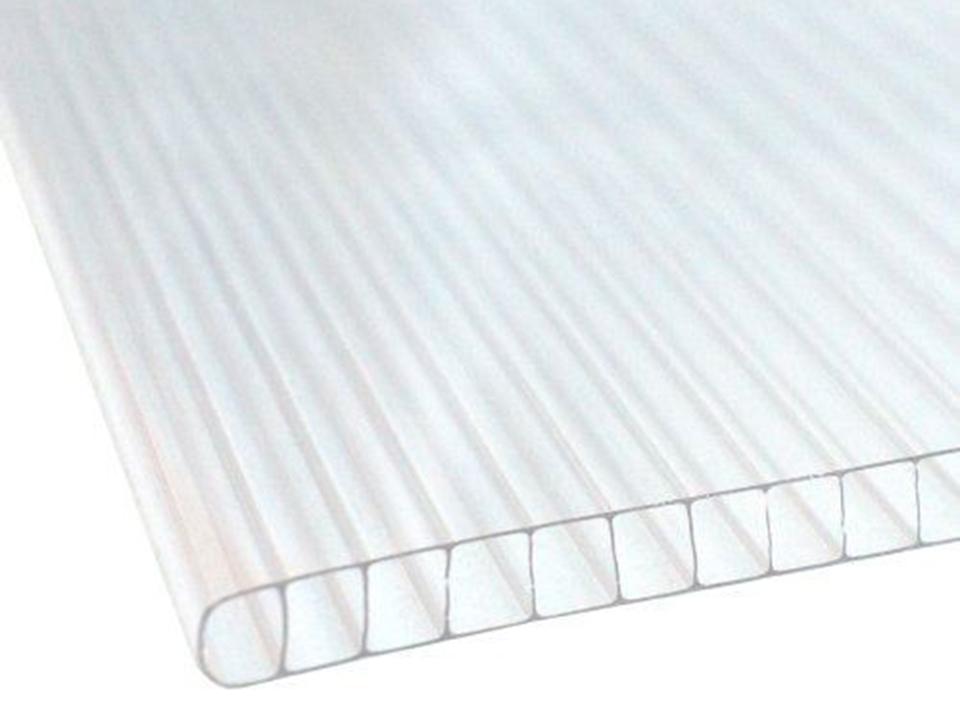
These panels keep heat confined inside your greenhouse, making it an energy-efficient alternative. Twin-wall Polycarbonate also helps carry warmth from the sun into the depths of your greenhouse so your plants can flourish. It can also provide more benefits like improved harvest, more leaf count, and shorter growth time.
Twin-wall Polycarbonate is less likely to break or bend because it has a very sturdy design.
Twin wall sheets confine air between two walls. It gives up to 50% power savings compared to single wall sheets. The air-trapping ability assures great thermal insulation.
Triple-wall Polycarbonate

The triple wall materials enclose more layers which are best for cold climates. An 8 mm triple wall Polycarbonate offers added insulation in comparison to 8 mm twin-wall.
Triple-wall Polycarbonate is long-lasting and generally impact resistant. They reduce light transmission by roughly 20-30%, though.
They require a higher initial investment but may be worth it for you in the long run. The enhanced insulation can end in long-term savings on winter heating expenses.
It is particularly used in cold climates for year-round greenhouse gardening. This type of Polycarbonate can withstand massive snow loads and freezing without deformation.

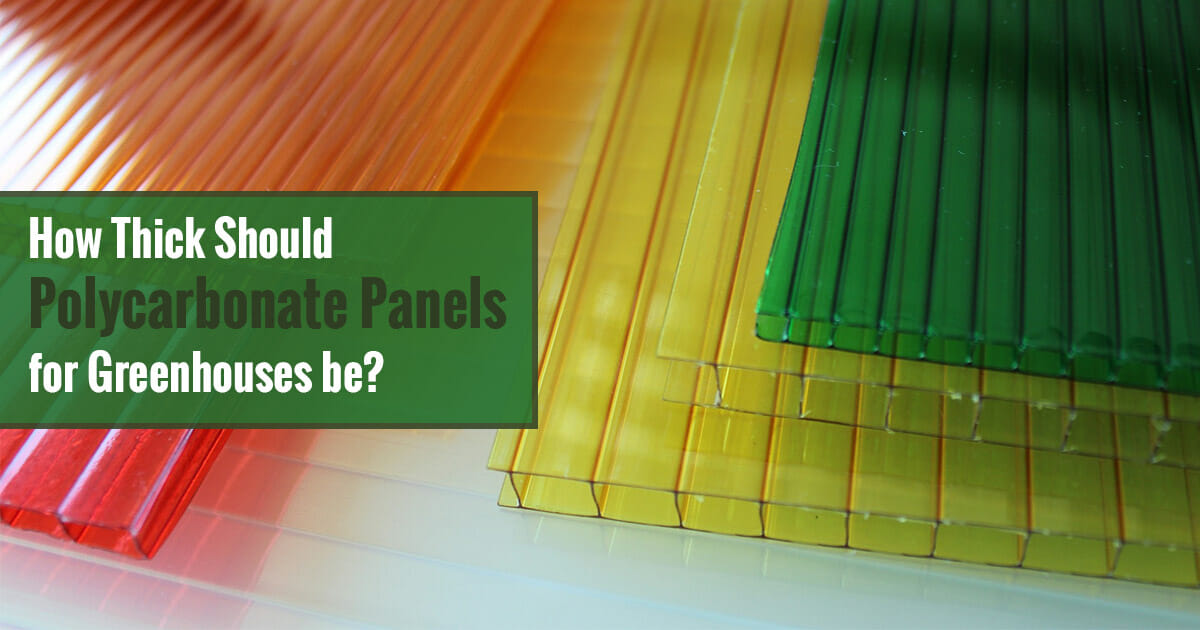






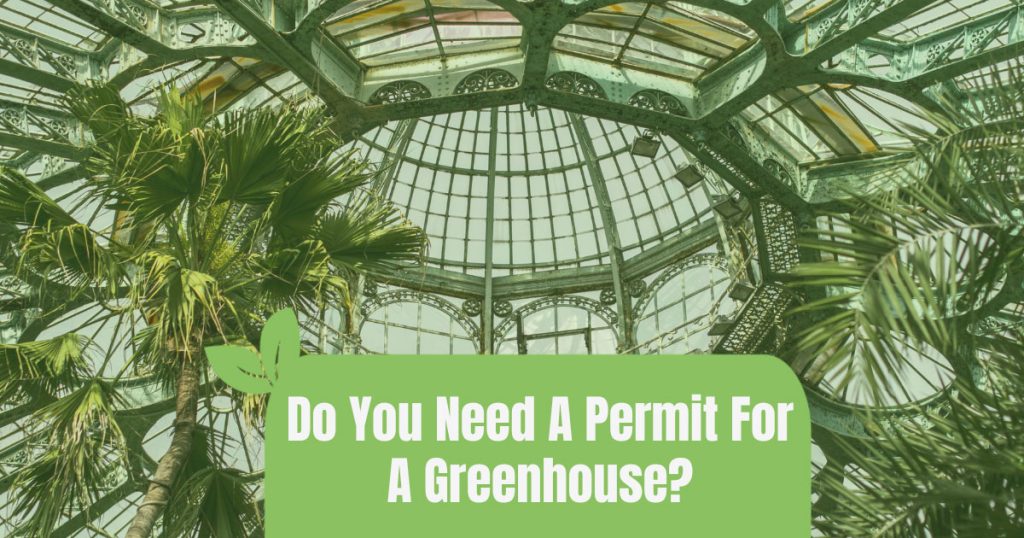
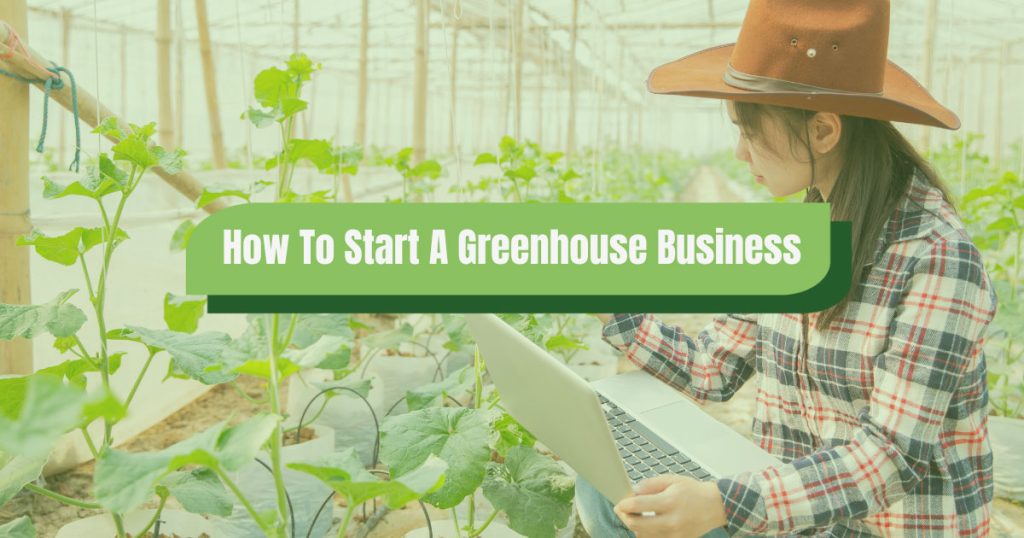




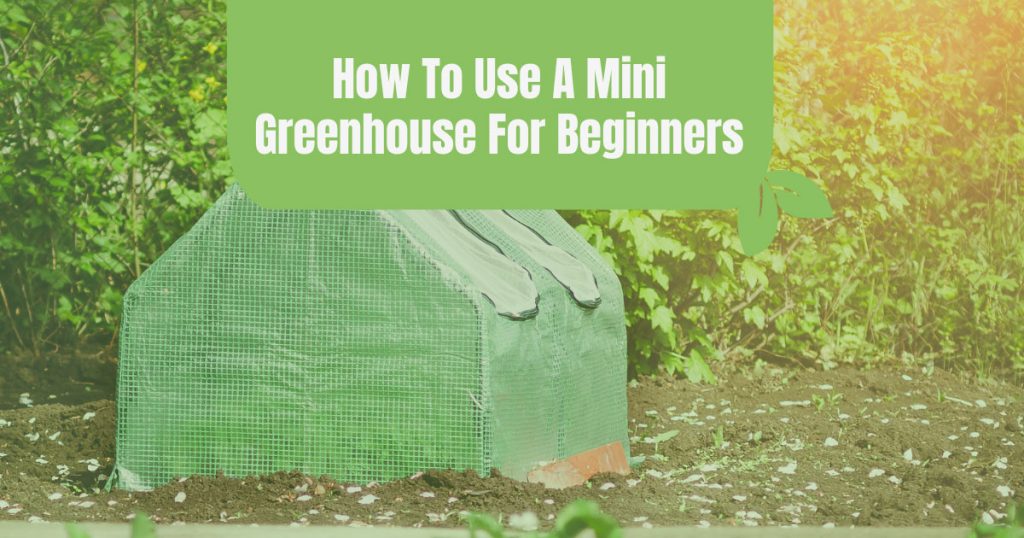





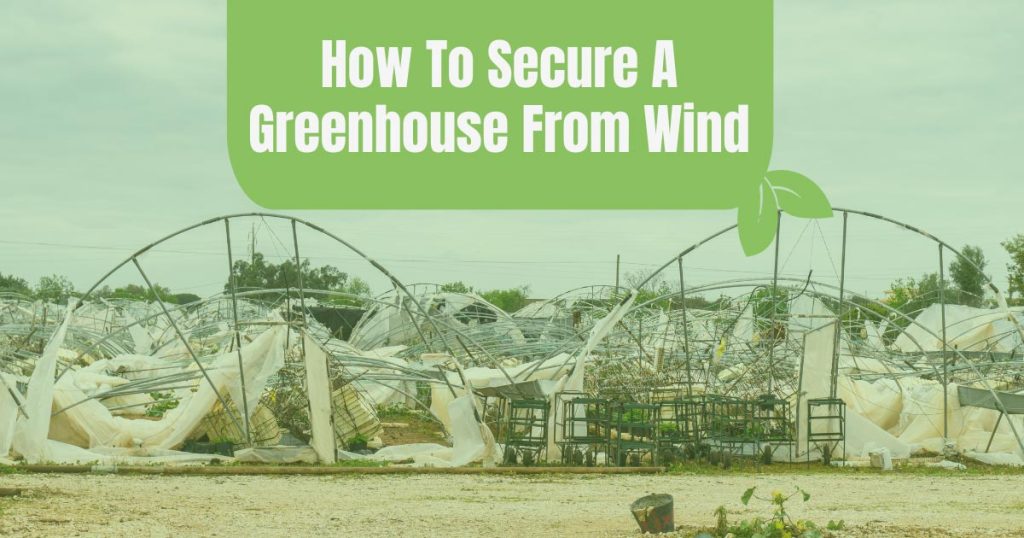











35 comments
hello there. i’m going to invest in a greenhouse for next spring. The choices are endless and overwhelming. i found this article very helpful and i am sure i will reference it again! However you didnt mention how humidity comes into play. I live in zone 4B where it can be very humid. My main objective in getting a greenhouse would be to control the humidity from the spring to the fall. would be shut down for the winter. what would you recommend?
Hi Kev! You are correct that humidity is an important factor to consider and it may be a little tricky if it’s very humid outside. Plants also create more humidity so it’ll be more challenging for your location. You will need to ensure adequate air circulation, which can be achieved by using vents and fans. Our suggestion is to look for a kit that includes exhaust fans and a ventilation system (or add those accessories). This will assist with moderating both temperature and humidity. Good luck with your greenhouse!
Hello I live in zone 7b so it doesnt freeze for many days in the winter. I am confused what thickness I would need for an area like this. Thanks in advance
Hi Sharon! In most situations a thickness of 8mm twin-wall Polycarbonate will work fine. This will be the case in zone 7b and you may be able to use a thinner wall if you plan on heating throughout the cold season. Hope this helps!
I work at a school and they gave me some panels that were used will they be okay there is some dirt in them
Hi Kim! There are a number of factors to consider if the Polycarbonate will be suitable for a greenhouse, including thickness and insulation range. If these are acceptable and the only issue is some dirt, you should be able to clean with soapy water. You can find more information on how to safely clean Polycarbonate at our blog How Do I Clean My Greenhouse & How Often
I am zone 8b and we plan to build our own. Is the twin wall poly sufficient? We have pretty hot summers so I am worried about it getting too hot.
Hi Amy! In most situations a thickness of 8mm twin-wall Polycarbonate will work fine. This will be the case in zone 8b and you may be able to use a thinner wall if you plan on heating throughout the cold season. If you are concerned about summer heat, check out our article 10 Ways to Keep Your Greenhouse Cool in Summer. Hope this helps!
Hello. I am in zone 6a and we are currently building a greenhouse for year round use. We get pretty cold winters and hot and humid summers. Would 8mm triple- wall be sufficient?
Hi Melissa! In most situations a thickness of 8mm twin-wall Polycarbonate will work fine. This is true in 6a and you will need a plan for heating throughout the cold season. You will also want to make sure that the greenhouse is well insulated and seal any seams. For information on heaters, please read our blog Best Greenhouse Heaters for the Cold Season. If you are concerned about summer heat, check out our article 10 Ways to Keep Your Greenhouse Cool in Summer. Hope this helps!
Hi, I live in zone 5 on top of a mountain where it can be very windy and cold. What would be the best polycarbonate panels for me to use.
Hi Laura! Glad you ask this. As a rule of thumb, 8 mm and higher will do fine for any type of weather. If you don’t get many icy-cold nights or if you plan on heating your greenhouse throughout the cold season, you might be good with thinner panels. I hope this is helpful.
Hi, the information you provided is great, just one question, after how many years we have to replace the sheets, do thy degrade in quality of light passing to the plants during the course of time?
Hello Syed! Polycarbonate plastic is considered as one of the best greenhouse covering materials. If maintained properly, this type of covering can last for ten years or more. Year-round gardening is easy because of the heat and humidity-retaining feature. Please refer to our article on Best Greenhouse Covering Materials for DIY Greenhouses for further information.
I’m looking for something durable and light diffusing to use on a barn roof.
So my main concern is snow load/weight capacity for these panels
Good Morning Garry!! The snow load is determined by the frame. For maximum strength, we recommend that the framing (trusses) that will support your polycarbonate be placed 16″ – 24″ on center. If applying to a greenhouse frame with 4′ or 6′ centers, cross bracing is recommended to prevent sagging between the bows.